Sometimes You Just Gotta Speed Animate…
by
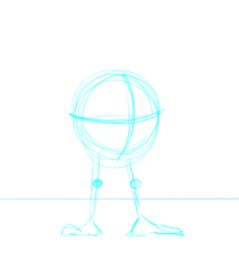 Tight schedule, eh? Low budget, you say? Sure! No problem.
Tight schedule, eh? Low budget, you say? Sure! No problem.
Actually, maybe I’m just spoiled by the the long and detailed-oriented hours spent on a feature film shot, but I find the challenge of animating on a tight schedule kind of fun. It forces me to trim the fat from my performances; to do some weeding in my garden of animation tricks; to truly caricature. I like having that opportunity to get to the essence of the idea and decide what the most entertaining and appealing thing I can create in a short time span. Its a fun test. I know saying all this may get me punched by people frustrated by the excess of time-crunched schedules in their every day work lives, so I apologize if I appear too obnoxiously giddy. For me, it is always a temporary change of pace (literally) so I like to take note of the things I do to get through it.
The reason I am talking about this is that I just got done animating on just such a job. I went solo on a 60-second promo piece; 13 shots in 12 days. Nuts. But, fun nonetheless. I plan on doing a little 10-minute demo edit once the podcast is up and running. But I figured I’d share some stuff now while it is fresh in my head.
Simplifying my performance ideas is first on the list. Yes, I need to achieve the director’s vision, but I immediately try to discover how FEW poses I can use to accomplish that. This is an approach I use for every kind of shot, really – but in this case it is at its most extreme. The fewer the key poses, the more you can allow them to hold on screen and really read. Then, I can use an exaggerated approach to the overall body mechanics – including lots of contrast – to achieve maximum entertainment value and readability. Plus, more holds leave room for appealing facial expressions, which is what actually takes your audience along for the ride.
After I’ve chosen my poses, it’s time to quickly block it out. What I like about doing this quickly is that I can totally take advantage of my oft repeated mantra – “animate from the core.” In every shot, I treat the character’s blocked pose like AM’s “Ballie” rig. That is to say, if I know where the feet need to be, and where the core of the body needs to be in relation to them (and to the overall force, momentum, and sense of balance) then everything else above that core can be posed in support of that.
Here’s what I mean: first, I pose the character’s origin position, then I pose their ultimate goal.
Then, using only a few poses, I block out the important physical actions needed to get there. Again, only the core and the feet. I’ll pose the other stuff as soon as this part feels right.
Once the general feeling of force and weight feels good, I make sure I track the arcs right away. If the core and feet are working well, in terms of arcs and spacing, right from the start you will be surprised how everything else falls in to line much more smoothly.
When the core is working, I then start to go up the chain and block in the torso poses. Remember, the spine is always supporting what the core intends to do. If the core wants to build up energy and force itself upward, the spine will bend to help change the center of mass just right for that to happen. In the case of this simple jump, it will bend slightly forward, in front of the feet, to help the forward movement. Then, it will shoot straight, and actually bend backward a little in this case to control the forward momentum while in the air. Then the spine will reverse shape to help control the core’s ability to land in the most balanced way. Then it will bend to absorb the weight of the landing, and to once again adjust the center of mass so the core can try to stay as balanced as possible while it stands up. Then it will calmly return to a natural shape above the core for a balanced rest.
I then continue outward on the joint chain, and block in the extremities, namely the arms. Note, I am still working in these few stepped poses, and flipping back and forth between them – constantly tracking the arcs of all of these new pieces to make sure I’m not creating any crazy spacing pops across the screen when I go to spline.
And then, if there are any further extremities, like ears or a tail (like there was in this last job I mentioned) then I block those in right away. The approach I take to these extremities is to pose them in their extreme position; that is, where will they be when the force of this pose has it’s maximum effect on them. It will create a very even and linear look when I first go to spline, but I will be offsetting keys at that point, so it won’t be an issue.
Then I throw it in to spline, and look at the clock. GAH!!! I just blew through two hours putting in those simple poses. I gotta speed it up if I’m going to stay on schedule! So, decisions have to be made. Specifically regarding polish. What I am I going to choose to really focus on to make sure this shot has enough believability to be entertaining and appealing? My approach is to start with the extremities. If I can get to nothing else, as long as the head, arms and the other floppy bits, like ears and tails, can show a modestly believable sense of weight, I think I can get my idea across in the strongest way possible without obsessing on too much detail. Thus, I offset.
So, if my poses were mechanically strong enough, and I was letting everything support the core movement, and I was posing my extremities in their most extreme state, I should be able to offset their splined curves from the core (by one, two, even three frames) and get a pleasing result right away. In most cases, an offset curve will create some nice delayed follow-through. What I will usually have to do is key in a bit of drag at some of the more forceful moments.
My last step of (ahem) polish is to allow for some extended settle in the extremities. The farther away from the core, generally, the longer a piece of the body takes to settle (or wiggle, or whatever). The speed or frequency of that residual wiggle or follow-through is what is going to show off its weight – something light will wiggle small and fast; something heavy will settle longer and slower. By having this detail to attract the audiences eye, I feel like I help create the illusion of weight just enough to tell whatever story I’m trying to tell.
A quick frame through to double check for spacing pops, and voila! I send that baby to the client or publish it to the server or whatever. Yeah, I know it’s not feature quality, but at least I can feel like it has enough to be entertaining and hopefully appealing – maybe even funny, if I’m lucky.
Maybe there is some sim on the rig, or cloth on the character that will enhance it a bit. But it is what it is, and no matter how small the schedule, I always feel, as I’m sure everyone else does, that I have to do my absolute best. And I don’t think it is impossible to do so, as long as I stay focused on these “core” ideas, so to speak.
And hey! Please share some more thoughts. We’d all love to hear some other approaches to “speed animating” that are out there! I know I’m not done learning, that’s for sure. Bring it on! 🙂
/ken
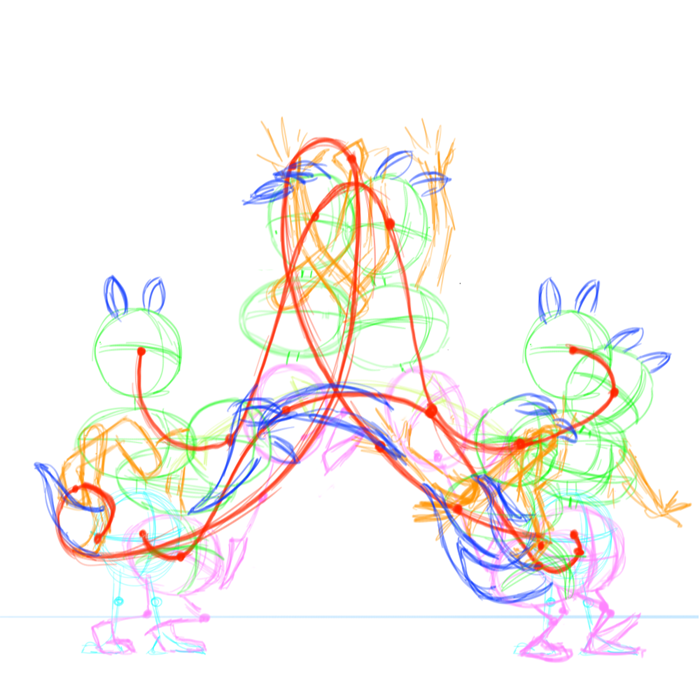
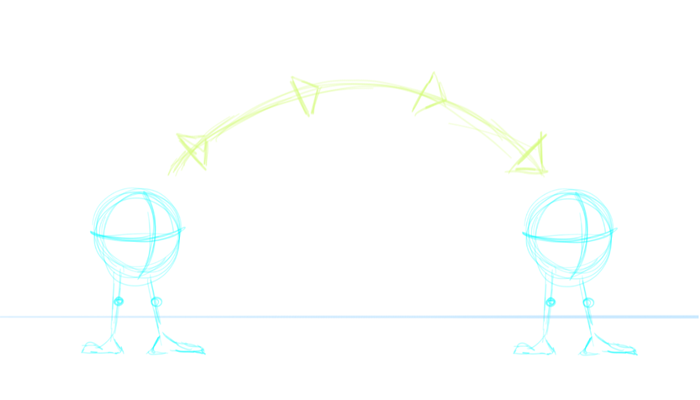
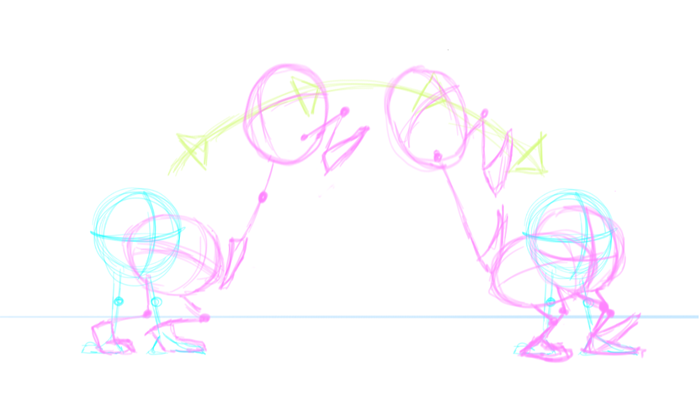
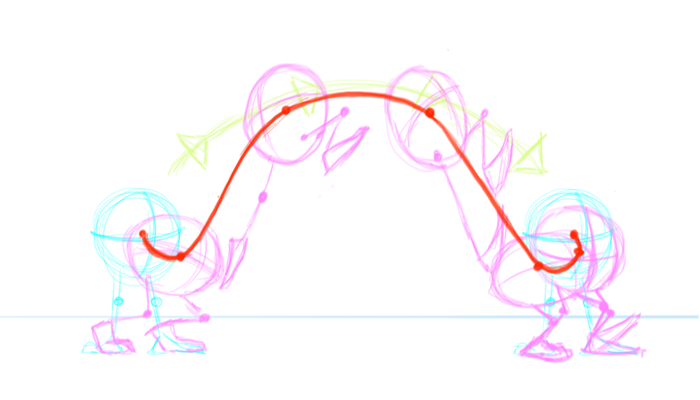
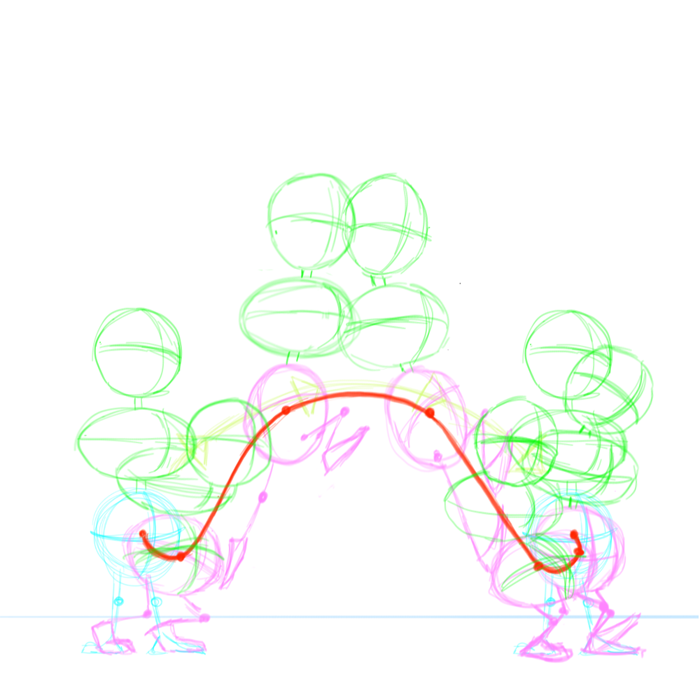
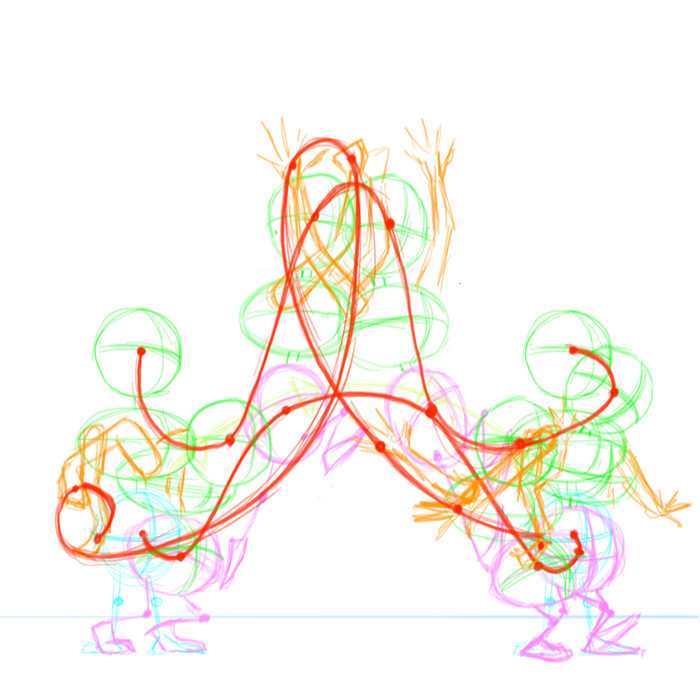



Thanks A Ton Ken! I follow your blog like a honey bee. Its so inspiring and giving us the confidence that anybody can do it. 🙂
of course i’m nowhere as experienced as you, but the approach i have i believe is pretty much the same, wich reassures that i could be good at some point!
great posts… 😀
Thanks so much for sharing this Ken.
What works for me is having a solid idea of what I want from the shot. If I know what poses I’m going to have in the shot, how the mechanics is going to be, where the spacing is slow, where it’s snappy, the arc… all these little details laid out in front of me… I could just go in and animate not having to think too much “conceptually”.
I know it’s basic. But many times I’ll forget to get a good idea of how at least one of these elements (spacing of an extremity maybe?) work, and that slows me down big time when I’m polishing.
Wow… its like more well thought out version of layered approach…
For speed animating
I think Pencil tests in planning, save so much time in CG, as you can scribble different versions, sometimes combine decisions and we are not at all robust to change and suggestion at that stage..experimenting with timing and poses so easy in it plus while going in CG we definitly know what are most important milestones and what has to be improved beforehand…
Another way to speed up .. I think Traditional Flash Animation approach …
Having rich libraries of facials and poses and hands..
With smart use shelf and shortcuts can improve speed faster…
For example having single shortcut button of playblast in shelf saves lot of time
Another thing that usually works is.. preparing pencil tests of 2 or 3 shots that are to be done…
Then switching between those shots at different stages in maya …
That way eye always remains fresh… and we don’t get stuck up in just one shot … working 3 different shots keeps creativity and brain on super awesome mode…
Because of pencil tests …we already know that the shots are going to work out in the end.. so no pressure of incomplete shots
Plus after you are done… 3 different shots get completed !!!
P.S. : I have always heard legends of Mark Henn as incredibly superfast ninja animator …
Does anyone have notes or talk or anything where he talked about how to produce those awesome results ??
…thanks in advance… 🙂
GREAT advice, Mahesh! It reminds me that I’m totally excited about the new grease pencil in Maya 2014. I plan on using that approach more often. Thanks for sharing man!
Oh, and Ted Ty is a good friend of Mark’s. I’ll have to ask him to share some stories. Dave Burgess at DW is crazy fast too. I hope to get him on a podcast interview in the future, so stay tuned 🙂
Thank you so much ..Podcast would be really great idea .. 🙂
Thanks for sharing your thoughts Ken. Yeah it’s really tough to work like that.
The good part is that I’ve really learnt to value my poses. And specially the eye darts and blinks. The key is using them in the right moment so you get the maximum effect from them to keep your character alive. Good , clear and dynamic poses are essential as well.
And the best of all is that you get quicker animating, so when i want to animate something really polished at home i can try many possibilities knowing that i can re block pretty quick.
To resume, I think that having a tight schedule is a good training field.. but i can’t wait to try how it feels to work in features! 😛
Darts and blinks! They can do so much, yes – on a fast or slow schedule 🙂 Good reminder, Martin. Thanks!
Really great post Ken! I struggle with this a lot, trying to get this stuff out fast and also making it the best that I possibly can. I remember being told at AM that whenever you are working on a shot, pretend that you are making it for your demo reel. This is really hard when you are trying to get work done as fast as you possibly can and you know that the shot suffers for it
Awesome post thank you very much 😉